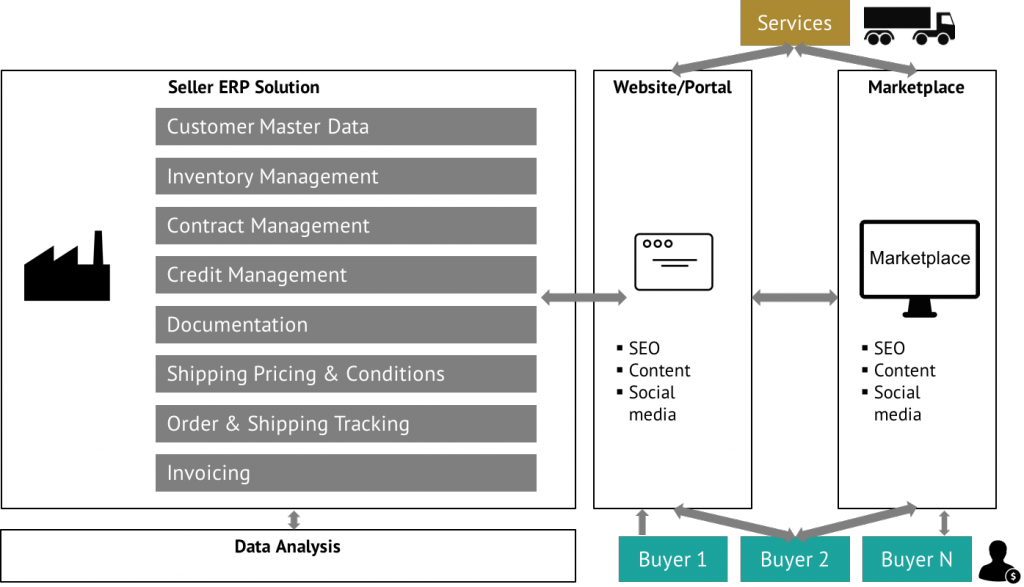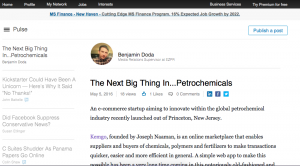Let’s spend some time focusing on digital marketplaces, not because that’s what Kemgo is, but, rather, because marketplaces are a solution that makes digitalization a little less overwhelming
A manufacturing company that spends large amounts on the purchase of chemicals can gain a significant cost advantage if it is able to bring down the amount that it pays for its purchases. Many organizations however, assume that optimizing the procurement function is limited to getting the lowest possible prices from their suppliers.
Topics: Pricing in Chemical Industry
Chemical companies that enhance their digital B2B capabilities will be in a better position to adapt to a changing competitive landscape. They can take advantage of several important opportunities, including deeper and stronger customer relationships, streamlining lead qualifications, and extending company reach.
Technology and business practices are evolving and the shifting expectations of customers are quickly raising the bar for most suppliers. e-Commerce interactions in the chemical industry will need to be more customer-focused and richer. In the near future, all B2B processes will be digitized. That is a shift that will enable sellers to more effectively and proactively improve their marketing efforts and customer reach.
You may have heard the term: “Never change a running system (or machine)." If you are German or have lived in Germany for quite some time I would be quite surprised if you have never come across it. This term is in fact a German pseudo-Anglicism. It comes from the expression: “Never change a winning team.” That has a different relevance after all.
You might remember the quotes I mentioned about Zetschke, Darwin and that managing partner from a large consulting firm in Part 2 of this series blog: Change is an integral part of our lives and it is needed to stay competitive. It is needed to survive.
We wanted to spend some time talking about the current status quo in the order-to-cash and procure-to-pay processes within the petrochemical industry.
Interactions between buyers and sellers in our industry typically rely on tools and techniques that have been around for decades and they have not changed very much – for good reason! The standard sales process is fairly simple: when a buyer needs raw material to produce a product or provide a service, they will contact the manufacturer or distributor of that product primarily by phone, email, or fax, get a quote, or several, work out the terms and try and come to some sort of an agreement.
In Part 2 of our blog series: Digitalization in Petrochemicals, we would like to give you a little more detailed view on online portals in practice.
In the perfect situation as a supplier, you would run your own e-commerce platform and have it linked with your own ERP system in order to efficiently manage customer master data, inventory management, contract management, credit management, the documentation, shipping pricing and conditions, order and shipment tracking, and last but not least the invoicing. This setup would be further connected to an independent online marketplace.
When we first came up with the idea for Kemgo, over two years ago, there was very limited information that we could find around digitalization in the petrochemical industry (unless it was around innovation on the product development side or the startups we saw at the beginning of the century).
Topics: Digitalization in the Chemical Industry, Kemgo News and Highlights
We are excited to be featured on Pulse from LinkedIn. Thank you to those who made this one possible, and helping to get the word out on digitalization in petrochemicals.
Topics: Kemgo News and Highlights
We are excited to be featured in Plastic Technology. This is the second media mention in a week! We are encouraged by the publicity and recognition.
Topics: Kemgo News and Highlights








